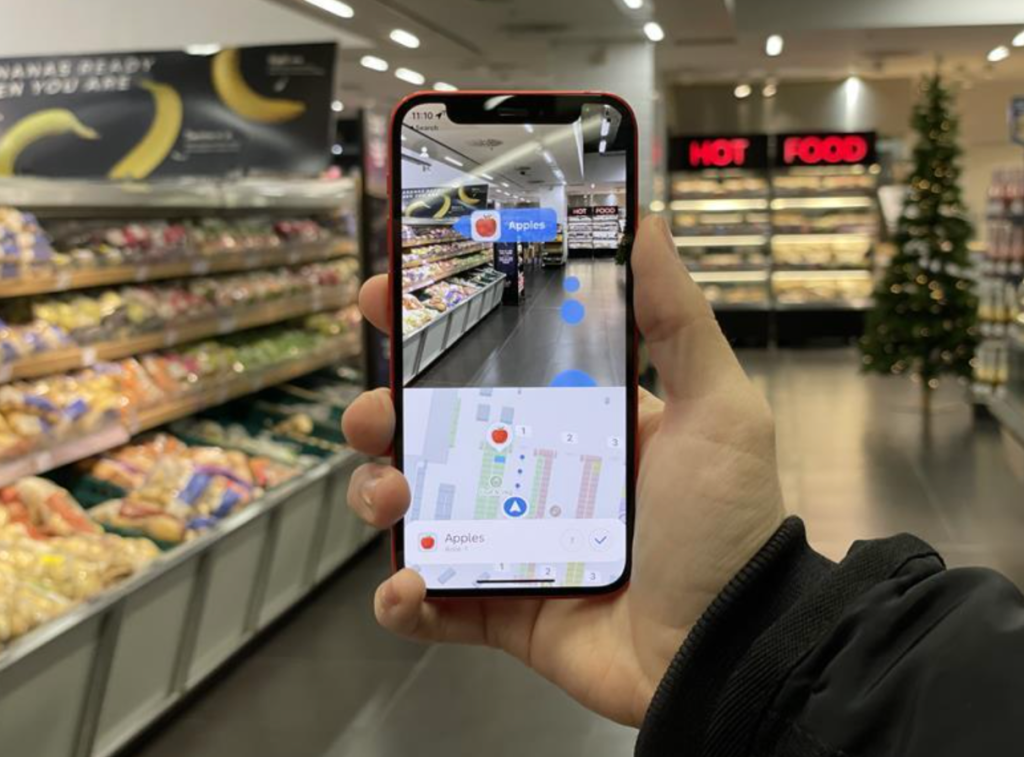
Augmented Reality (AR) is no longer just a futuristic concept in science fiction movies. Today, it is rapidly transforming how people shop in the United States. From virtual try-ons to in-store navigation, U.S. retail stores are embracing AR to improve customer experience, boost sales, and stay ahead in a competitive market.
This article explores how AR is being used in U.S. retail, why it matters, and what it means for the future of shopping.
Table of Contents

Before diving into how it’s used, let’s understand what AR is. Augmented Reality is a technology that overlays digital information—like images, animations, or data—on the real world using devices like smartphones, tablets, or smart glasses.
Unlike Virtual Reality (VR), which takes you into a completely digital world, AR enhances the real environment by adding interactive digital elements to it. This blend of physical and virtual experience is what makes AR so powerful in retail.
Why Retailers in the U.S. Are Adopting AR
The retail industry in the U.S. is highly competitive. Consumers expect fast service, personalized experiences, and convenience. Retailers are turning to AR for several reasons:
- Enhanced Customer Experience: AR adds fun and interactivity to shopping.
- Reduced Product Returns: Virtual try-ons help customers choose better.
- Increased Sales Conversion: Engaged customers are more likely to buy.
- Better In-Store Navigation: AR helps shoppers find products quickly.
- Data Collection: Retailers get insights into customer behavior.
Virtual Try-Ons: Changing How We Buy
One of the most popular uses of AR in U.S. retail is virtual try-on technology. It allows customers to see how a product will look on them before buying. Big brands like Warby Parker and Sephora are leading this space.
- Eyewear Stores: Warby Parker lets users try on glasses using their phone camera. The AR app places the selected frames on the customer’s face in real-time.
- Beauty Stores: Sephora’s “Virtual Artist” app helps customers test makeup products like lipstick, blush, and eyeshadow virtually.
This technology not only saves time but also builds customer confidence in online and in-store purchases.

AR Mirrors in Fashion Retail
AR is bringing smart mirrors into physical stores. These mirrors act like giant screens where customers can see how clothes or accessories look on them without trying them on physically.
- How It Works: The mirror scans your body and displays outfits on your reflection.
- Who Uses It: Retailers like Macy’s and H&M have tested AR mirrors in their stores.
This contactless and quick experience has become especially popular after the COVID-19 pandemic.
In-Store Navigation and Product Information
Big retail stores can sometimes feel like a maze. AR apps help customers find what they need without asking staff.
- Walmart’s AR Navigation: Walmart has been testing AR navigation tools inside stores that help shoppers locate items by pointing their phones at aisles.
- Product Scanning: Some stores let customers scan a product using their phone to instantly view price comparisons, customer reviews, or how-to-use videos.
This real-time access to information makes the shopping experience smoother and more informed.
Home Goods and Furniture Shopping with AR
Buying furniture or home decor can be risky if you’re unsure how it will look in your home. Retailers like IKEA and Home Depot use AR to solve this problem.
- IKEA Place App: This app lets customers see how a sofa, table, or chair will look in their room using their smartphone.
- Home Depot’s Project Color: This AR feature allows users to preview wall paint colors in their actual home environment.
By offering a realistic preview, AR reduces buyer hesitation and improves customer satisfaction.
AR in Grocery and Convenience Stores
AR isn’t just for fashion and furniture. Grocery stores are using it too.
- Smart Shelf Labels: Some stores use AR labels to show nutrition details or suggest recipes.
- Gamification: Stores like Walgreens have tested AR games that encourage shoppers to explore different aisles or learn about promotions.
This creative use of AR drives customer engagement and adds a touch of fun to routine shopping.
Training Retail Employees Using AR
AR is not only helping customers but also being used to train retail staff.
- Simulated Training: New employees can practice customer interactions or learn how to handle equipment through AR simulations.
- On-the-Spot Guidance: Some companies are developing AR glasses that give staff real-time guidance during inventory or restocking tasks.
This tech saves time and improves employee efficiency from day one.
Challenges in Adopting AR in Retail
Despite its advantages, there are some challenges retailers face when adopting AR:
- High Initial Costs: AR setup can be expensive for small businesses.
- Technical Barriers: Not all customers have compatible devices.
- Privacy Concerns: Collecting customer data raises questions about privacy and security.
Retailers must strike a balance between innovation and responsible technology use.
What the Future Looks Like
The future of AR in retail looks promising. As smartphones and AR glasses become more common, AR features will become part of everyday shopping.
- AI and AR Together: Combining AR with Artificial Intelligence will offer more personalized experiences.
- Metaverse Retail Stores: Some brands are exploring virtual stores in the metaverse where customers can shop using AR avatars.
- More Affordable Tech: As technology improves, AR will become accessible for smaller retailers too.
Final Thoughts
Augmented Reality is no longer just a trend—it is a tool that is reshaping the U.S. retail experience from all angles. It’s helping customers shop smarter, faster, and with more confidence, while giving retailers new ways to engage and grow. Whether it’s trying on a lipstick virtually, navigating a massive grocery store, or seeing how a couch fits in your living room, AR is making shopping more interactive and enjoyable.
For retailers, the message is clear: those who adapt to AR now will lead the market tomorrow.
Read More :-Top 10 Tech Hubs in the USA Outside Silicon Valley






